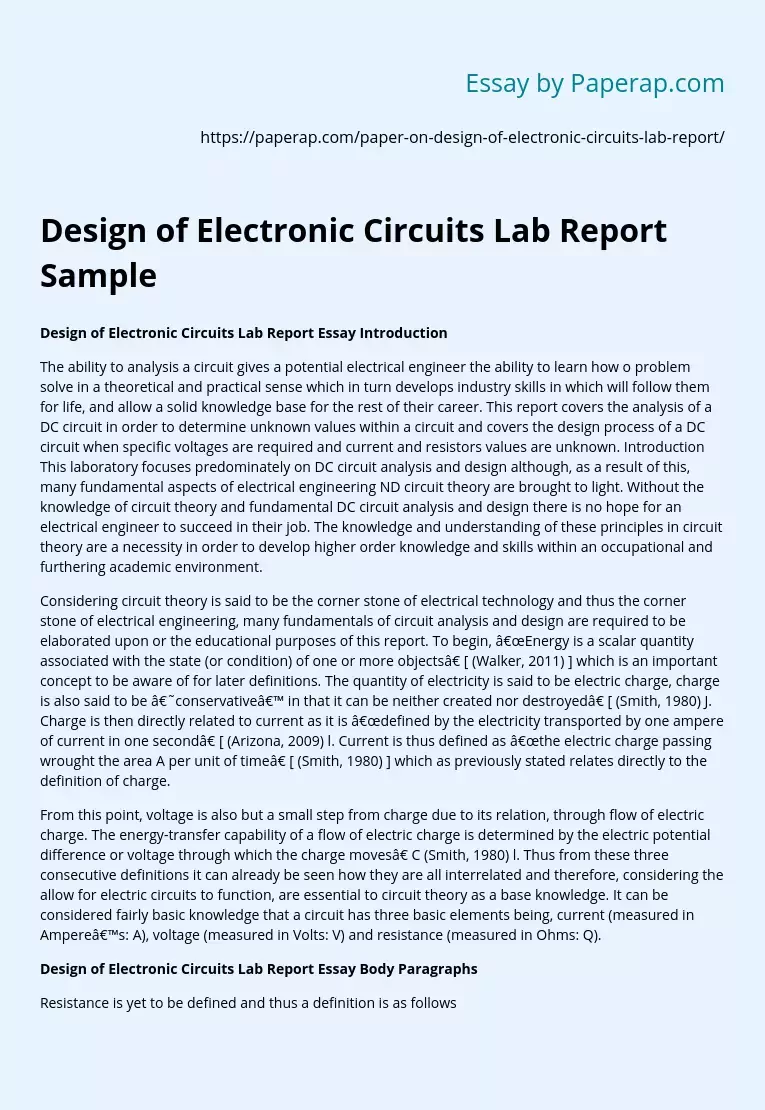Design of Electronic Circuits Lab Report
The ability to analysis a circuit gives a potential electrical engineer the ability to learn how o problem solve in a theoretical and practical sense which in turn develops industry skills in which will follow them for life, and allow a solid knowledge base for the rest of their career. This report covers the analysis of a DC circuit in order to determine unknown values within a circuit and covers the design process of a DC circuit when specific voltages are required and current and resistors values are unknown.
This laboratory focuses predominately on DC circuit analysis and design although, as a result of this, many fundamental aspects of electrical engineering ND circuit theory are brought to light. Without the knowledge of circuit theory and fundamental DC circuit analysis and design there is no hope for an electrical engineer to succeed in their job. The knowledge and understanding of these principles in circuit theory are a necessity in order to develop higher order knowledge and skills within an occupational and furthering academic environment.
Considering circuit theory is said to be the corner stone of electrical technology and thus the corner stone of electrical engineering, many fundamentals of circuit analysis and design are required to be elaborated upon or the educational purposes of this report. To begin, “Energy is a scalar quantity associated with the state (or condition) of one or more objects” (Walker, 2011) which is an important concept to be aware of for later definitions. The quantity of electricity is said to be electric charge, charge is also said to be ‘conservative’ in that it can be neither created nor destroyed” (Smith, 1980) J.
Charge is then directly related to current as it is “defined by the electricity transported by one ampere of current in one second” (Arizona, 2009) . Current is thus defined as “the electric charge passing wrought the area A per unit of time” (Smith, 1980) which as previously stated relates directly to the definition of charge.
From this point, voltage is also but a small step from charge due to its relation, through flow of electric charge. The energy-transfer capability of a flow of electric charge is determined by the electric potential difference or voltage through which the charge moves” C (Smith, 1980) l. Thus from these three consecutive definitions it can already be seen how they are all interrelated and therefore, considering the allow for electric circuits to function, are essential to circuit theory as a base knowledge. It can be considered fairly basic knowledge that a circuit has three basic elements being, current (measured in Ampere’s: A), voltage (measured in Volts: V) and resistance (measured in Ohms: Q).
Design of Electronic Circuits Lab Report . (2019, Nov 01). Retrieved from https://paperap.com/paper-on-design-of-electronic-circuits-lab-report/

